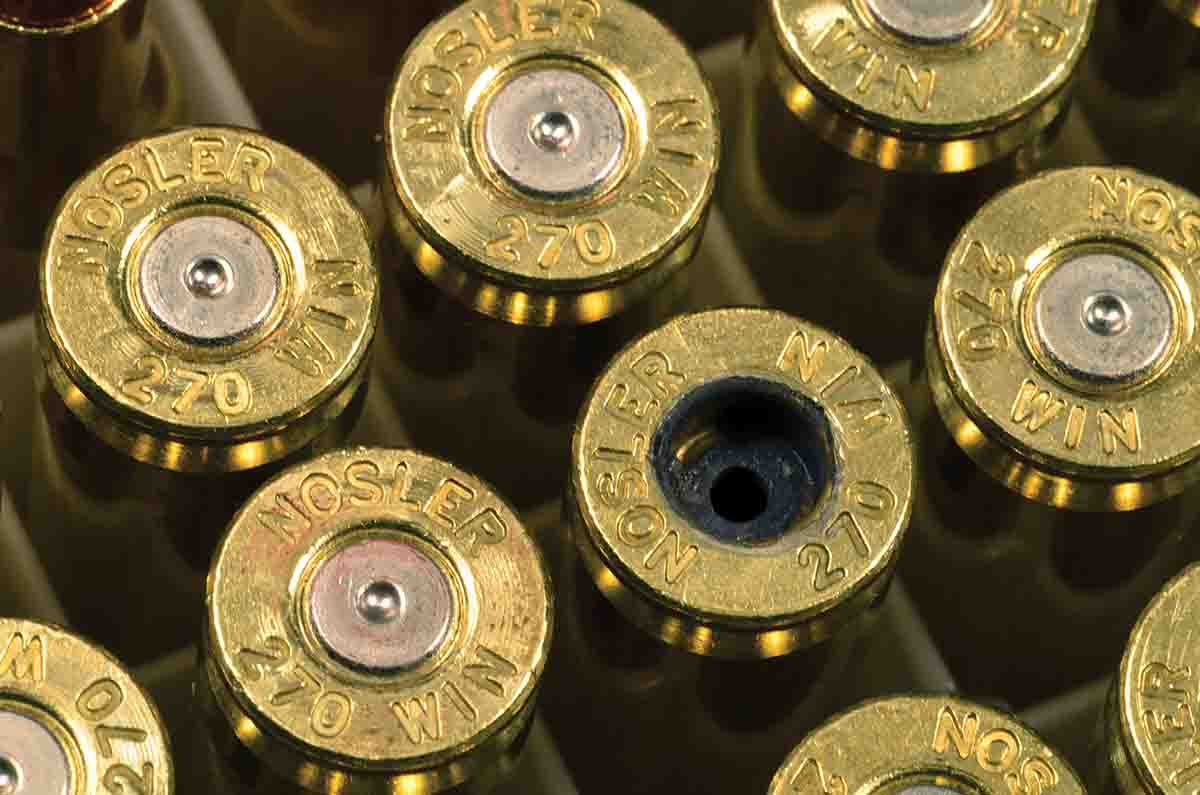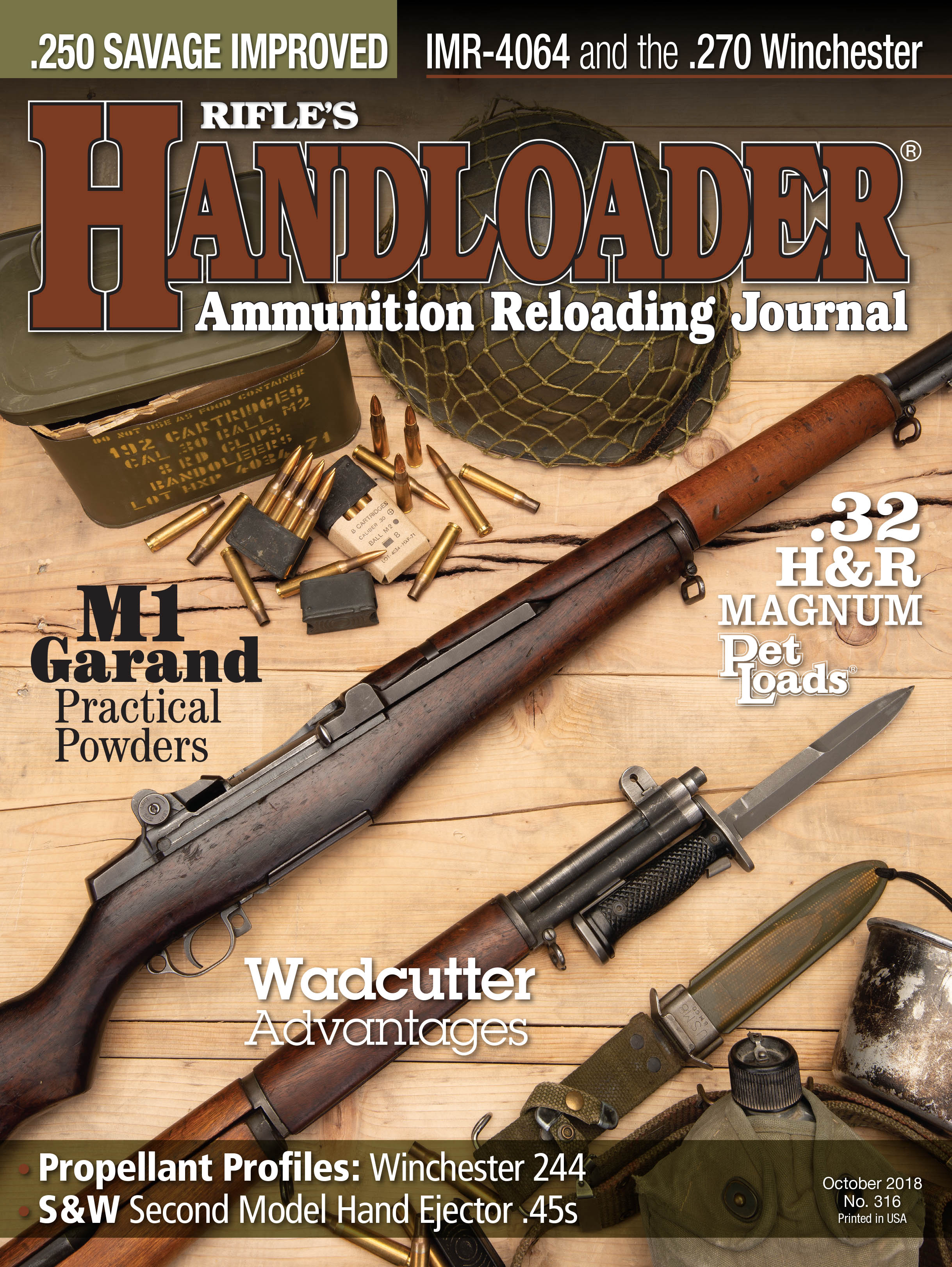In Range
Forensic Ballistics and Unsolvable Puzzles
column By: Terry Wieland | October, 18
A strange situation was drawn to my attention recently, involving a handloader, a rifle and an extremely puzzling occurrence.
The shooter was on the range with an early Ruger No. 1 .308 Winchester. He had 15 rounds of handloads. The first 14 were fired without incident. The last caused the forend to split and come away in his hand and locked the action up tight. To all appearances, there was no other damage to the rifle, although it took a gunsmith to get the action open and extract the cartridge case, the brass on which had flowed into every available crevice.
Since no rounds remained, it was not possible to dismantle one and study the powder. The loads themselves were of middling

For those who are waiting for a Eureka! moment wherein the puzzle is solved and the culprit announced, forget it. All of us – the gunsmith, my handloading-expert friend who told me about it, myself and the shooter – are all still completely in the dark.
I mention all this because something remarkably similar happened a year ago with a .270 Winchester hunting rifle and ammunition I made up for target shooting that duplicated my hunting load. The bullet was a 130 grain, and the powder was slow burning. I was on the range at the FTW Ranch, shooting from prone at steel plates a few hundred yards out. The first five or six shots rang the steel nicely, but my spotter called the next shot high and to the right. This seemed odd, but I kept shooting, and the steel went back to pealing its cheerful tune.
After a dozen rounds, I gathered up my brass and found one case with the primer blown. The primer itself was in the magazine well, and the primer pocket was so enlarged that I could drop the primer in and rattle it around. My conclusion is that this was the shot that went high and wide, but I can’t prove it. There was no damage whatever to the rifle, no curling tendrils of smoke and no excessive recoil or muzzle blast that I noticed – but I was then encased in recoil pads and ear protection. The bolt lift was not particularly stiff, and the case reseats in the chamber effortlessly.
Naturally, I stopped while I tried to figure it out. When I got home, I measured every bullet in the remaining ammunition to see if a .284-diameter bullet might have found its way into the lot of .270s. But no, all the bullets were fine. I even seated a 7mm 140-grain bullet in a .270 case, but it would not go into the chamber, so that ruled out the possibility anyway. The powder, being very slow burning, almost filled the case, and an additional grain or two could not have caused a pressure spike in the neighborhood of 90,000 psi. To this day, I have no real idea what the problem was, although I still eye the remaining rounds with some suspicion and have yet to shoot any more of them.
The only difference between this practice ammunition and the 50 rounds I loaded for hunting was that in the practice ammunition I used some of the bullet maker’s factory seconds, which are inexpensive, come in bags of 500 and are indistinguishable (to my eye) from their retail cousins. They are said to have slight blemishes, and that is the reason for their rejection by quality control. As a precaution, I took a handful and measured and weighed them. All were 130 grains, all were .277 inch in diameter.
Of course, the culprit bullet is long gone, downrange at the FTW, and the powder charge was consumed, but in spite of a year of consulting, brooding and doing everything except killing a chicken and examining its entrails, I cannot think of what might have happened to make that primer blow.
In both of these examples, the handloaders in question (myself and the other fellow) weigh each charge, we don’t just throw them from a powder measure. We then inspect each case before seating the bullet. It is possible – but only just – that he inadvertently mixed in some Unique powder that he was using previously for some handgun loads, because he uses his powder measure to throw charges, then weighs each one on the scale, topping up as necessary. Even so, that is a pretty far-fetched scenario.
Many years ago ballistician Dr. Lloyd Brownell was carrying out a program of experiments and compiling pressure data for various cartridges. He then wrote a series of articles for Handloader that were later compiled into the book Firearms Pressure Factors. While working with the .244 Remington (as the 6mm Remington was called) Dr. Brownell experienced a sudden pressure spike using a Speer 105-grain bullet.
It was a midrange load, and there were no difficulties whatever with other 105-grain bullets. It was so puzzling that Dr. Brownell flew out to Lewiston, Idaho, to consult with the Speer ballisticians. They finally determined that the Speer 105-grain bullet had a different configuration and longer sidewalls that gripped the rifling more tightly, thereby imparting more resistance and a pressure spike that was, they all agreed, dangerous.
Having worked up to this load with no problems using other bullets, Dr. Brownell thought he was safe in applying it to any bullet of that weight. Obviously not.
Today, 50 years later, the situation with bullets has become astronomically more complex than it was back then. The major change is the emergence of bullets made from pure copper, or an almost-pure copper alloy, with no lead cores. Not only do these not compress in the bore the way a jacketed bullet will, soft copper fills the rifling grooves and grips the lands in a way that gilding metal does not. Pure copper has a consistency almost like glue whereas gilding metal is “slippery.” Ironically, a soft bullet can cause higher pressures than a harder one because of the way it responds to the rifling. This is the reason loading manuals are now starting to publish loads specifically intended for this bullet or that one, and most (such as Hodgdon) will indicate exactly what bullet a load was developed with.
The rule of thumb in load development has always been that when starting with a new powder, a new bullet or even a new lot of the same powder, one should back off at least 5 percent from a published maximum load. I now believe that 5 percent (2.0 grains with a 40-grain charge, 3.0 grains with 60) is about the minimum, and there is a lot to be said for backing off right down to the manual’s recommended starting load. This is especially true if a handloader is working with components that are unfamiliar.


